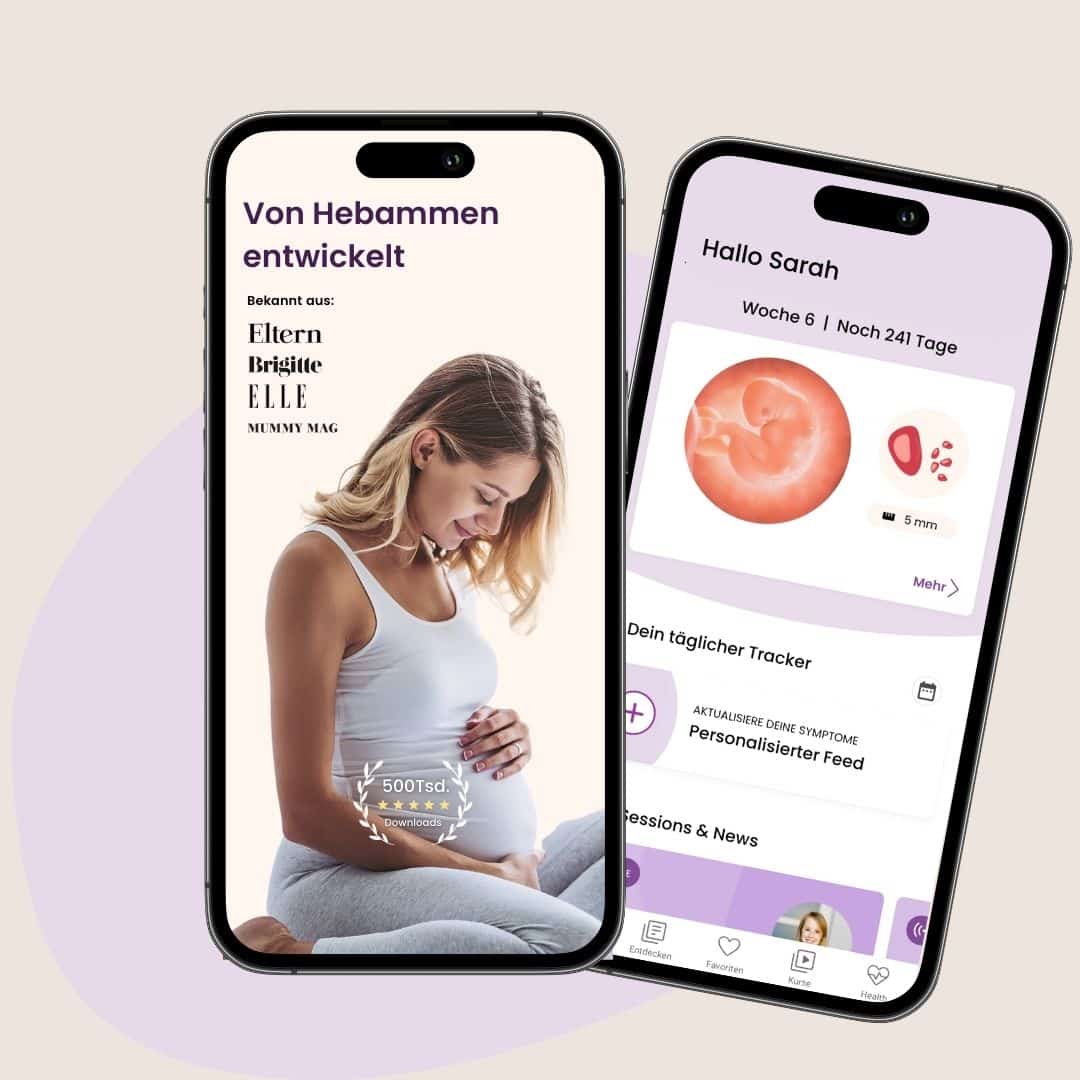Many pregnant women are familiar with it – water retention. Water retention is not only annoying and unpleasant, but also restricts the choice of shoes and jewelry when feet or fingers are affected. But how does water retention occur? More importantly, what can you do to alleviate it, or even minimize it during pregnancy right from the start?
Edema: More Blood in the Body
Especially in the summer, swollen hands, legs, feet or even a swollen face can make life difficult for pregnant women. Water retention is also called edema, and often accompanies a pregnancy, especially in the last weeks. Throughout the pregnancy, the blood volume of a pregnant woman increases by up to 40 percent. The water contained in this volume increases by up to 35 percent. This means that in reaction, the veins dilate to accommodate the flow of all this additional fluid. However, the veins also become more permeable and elastic, meaning water can escape and penetrate the surrounding tissue.
In addition, blood circulation during pregnancy is sluggish because blood is pumped slower towards the heart. The result: edema, occurring mainly in the limbs due to gravity (blood flows downwards and accumulates). In addition to the optical burden, other symptoms may be associated with it. If dizziness, high blood pressure, headache, flickering before the eyes, upper abdominal pain or tinnitus are involved, then pregnant women should consult a doctor. Only a doctor can make further examinations to rule out other diseases.
What to do against Water Retention and Edema
Even when it comes to harmless water retention, swollen hands and feet are not exactly desirable. But what can affected women do? Pregnant women can alleviate the symptoms of water retention if other diseases have been ruled out as the cause.
It is generally advisable to boost circulation, ensuring sluggish blood flow does not occur in the first place. Circulation is boosted by staying active and through light sports such as swimming, yoga, or going for walks.
Likewise, the calf muscles should be strengthened. Simple exercises to loosen up the calves can also be done in the office or at home. For example, alternating between placing your feet on their toes and heels while sitting. This stimulates circulation without overburdening the tendons and muscles. Instructions can be found here: Link to Health Tutorials
Another effective method is to use cold alternating showers or cool calf compresses to stimulate blood circulation and thus support blood flow.
Preventing Water Retention: Stockings from the Start?
It is advisable to wear compression stockings before the first signs of swollen legs even occur – preferably right from the start. Especially women who suffered from heavy legs prior to pregnancy should wear compression stockings right at the beginning of pregnancy. Health insurance in Germany covers the costs of up to four pairs of stockings during pregnancy.
How do compression stockings help?
When wearing compression stockings, the veins are gently compressed. With a defined pressure curve, the veins are supported in their efforts and thus blood circulation is improved. This not only reduces water retention in the legs, but also prevents varicose veins and spider veins. Targeted pressure avoids backlog of blood and improves blood transport.
Essential: Compression Stockings with Expert Advice
Compression stockings should not and cannot simply be bought „off the rack“. In the medical supply trade, they are professionally adjusted by measuring different circumferences of the leg to ensure the stockings fit each individual perfectly. Professional advice is essential. Only a specialist can supply you with the right stocking, made of the proper material, with optimal fit and strength.
However, this tight fit has an obvious disadvantage: compression stockings and tights can be very hard to put on. Since they should always exert a slight pressure on the veins, they must be particularly tight. This is not comparable to a normal pair of tights you can get in any fashion store. Therefore, it can sometimes be very difficult to put them on – especially when the baby bump is getting bigger. Some tricks can help this process along.
Tips for putting on Compression Stockings
- Put the compression stockings on in the morning, because the backlog in the veins is still very low at this time, and therefore your legs should hardly be swollen. The best time is right after getting up.
- Step by step, stocking by stocking: sit on a chair or the bedside and put on the stockings in small steps. Turn the stocking all the way inside out until the heel part becomes visible. Pull the stocking over the foot and heel so that the stocking sits well. If everything fits, pull the compression stocking up in small sections that are about hand-wide.
- 3. Use support: For the stockings of the company Bauerfeind, practical dressing aids and gloves are available. The fabric of the gloves ensures a better grip of the stockings and protects the stocking fabric from tearing. This is especially recommended if you have longer fingernails because the stockings should ideally hold for a while.
While compression stockings used to be associated with the image of older ladies, nowadays we have many more options to choose from – we have modern, trendy, sporty, and simply less obvious stockings to choose from. The stockings VenoTrain micro by Bauerfeind, for example, are made from over 50 percent microfiber – like a fine stocking, they are breathable and barely noticeable.
Since the stockings are not only offered in black or colorful tones, but also in a discreet nude tone, they manage to fit the individual style of every pregnant woman. Compression tights with an expandable lower abdominal section are also available specifically for pregnant women.



